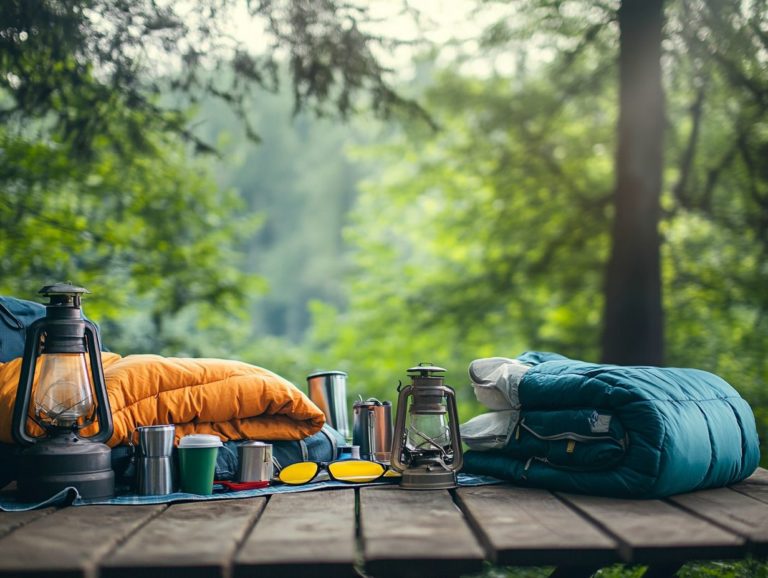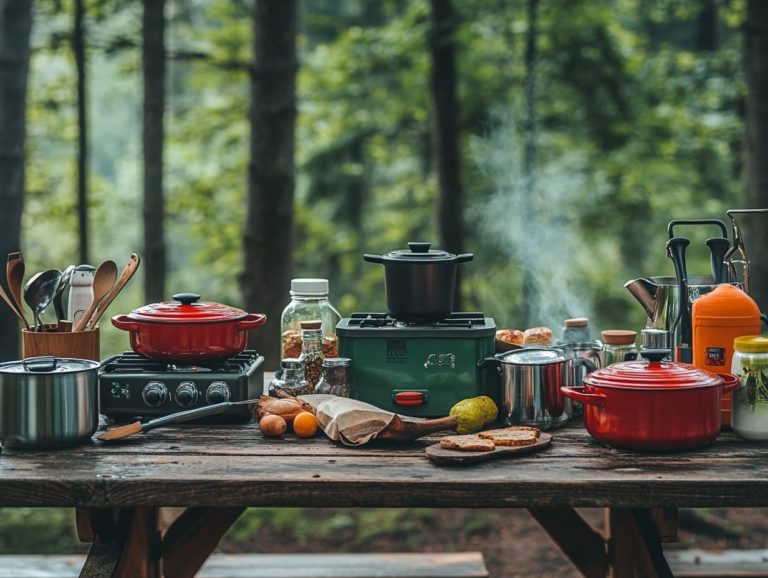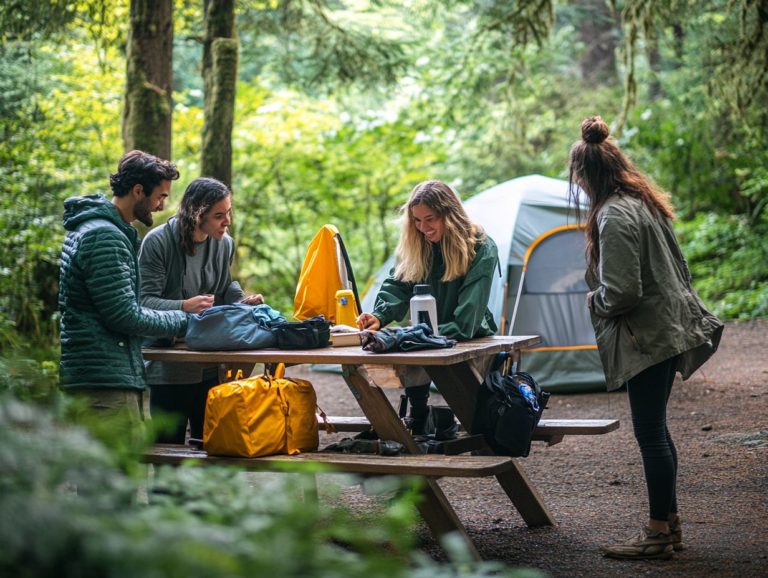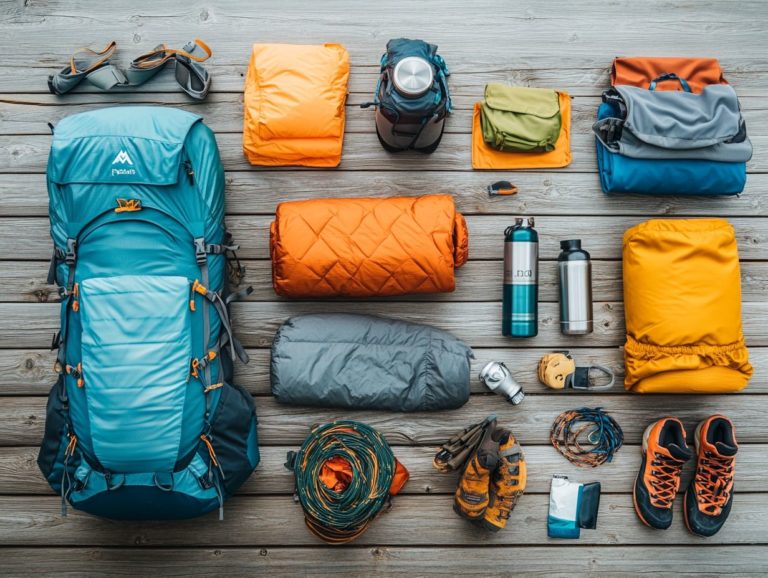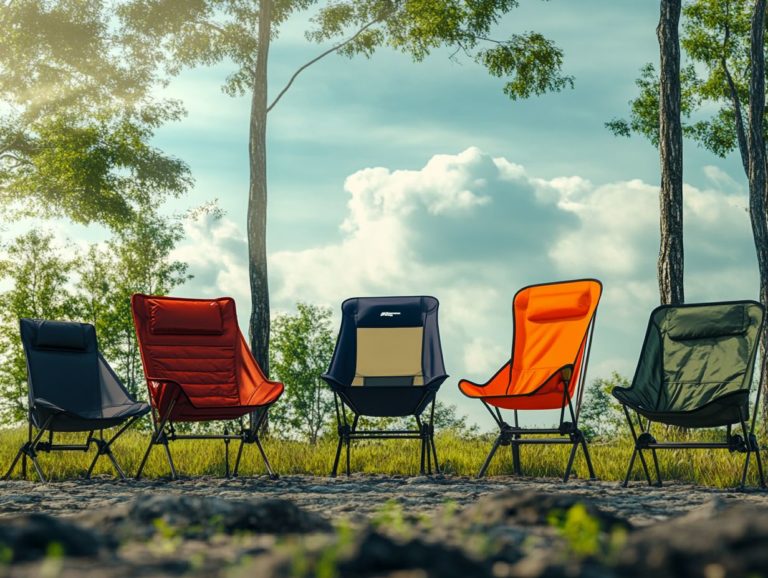How to Store Your Camping Gear Properly
Are you prepared to give your camping gear the attention it truly deserves? Proper storage is crucial for ensuring that your equipment remains in excellent condition for your next adventure!
This guide will walk you through essential steps for cleaning and organizing your gear, assessing your storage needs, and employing the best storage options for various types of equipment from tents and sleeping bags to cooking gear and clothing. You ll also find long-term storage tips to safeguard against climate impacts and pests, along with gear management strategies that keep everything primed for your next excursion. Get ready to make your gear last longer and perform better!
Contents
- Key Takeaways:
- Preparing for Gear Storage
- Proper Storage Techniques for Different Gear
- Long-Term Storage Considerations
- Retrieving and Maintaining Your Gear
- Frequently Asked Questions
- How should I store my camping gear for the best results?
- How should I clean my camping gear before storing it?
- Is it important to properly pack my camping gear?
- How can I protect my camping gear while it s stored?
- Should I store my camping gear in a specific order?
- How often should I check and maintain my stored camping gear?
Key Takeaways:
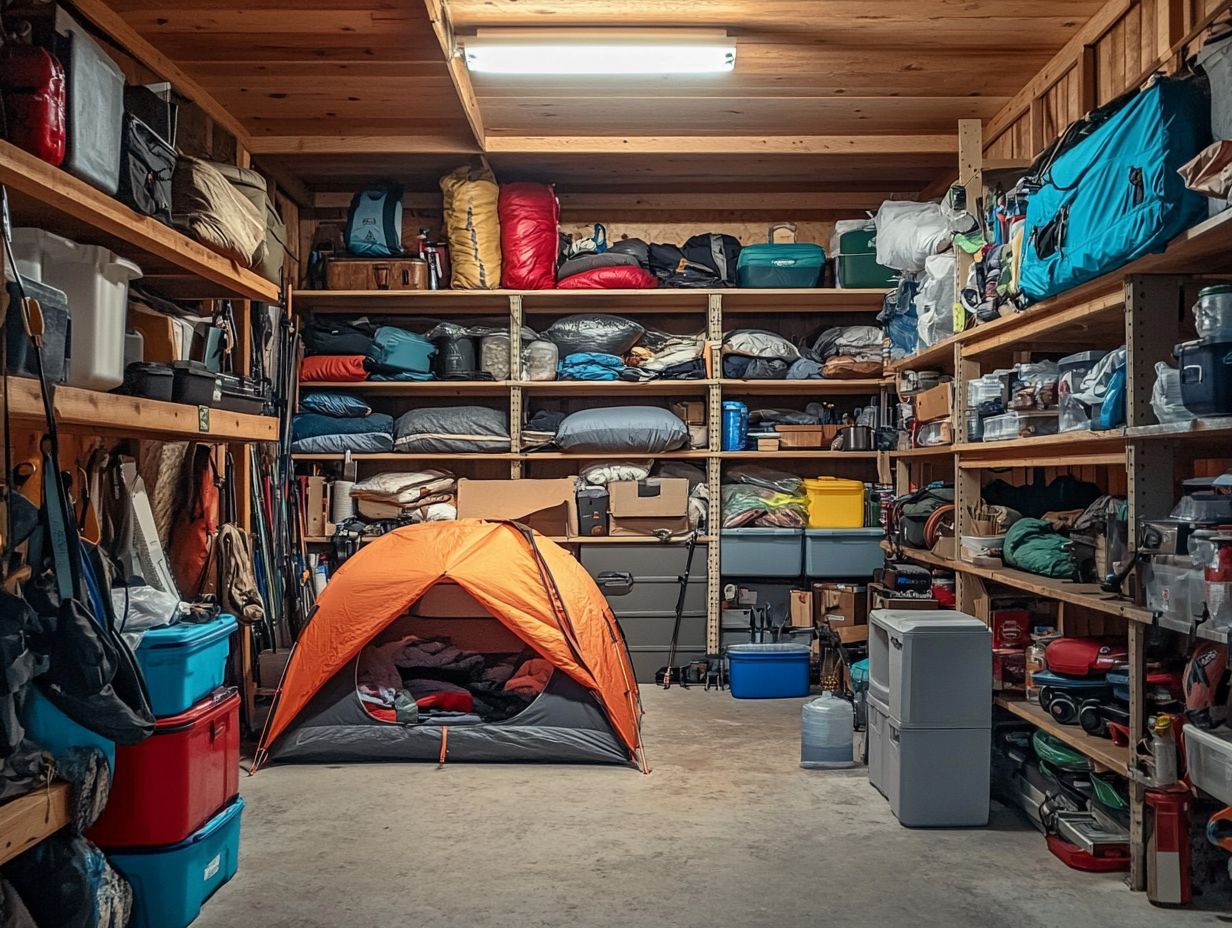
- Properly cleaning and organizing your camping gear before storage can save time and prevent damage. Consider using clear containers for easy visibility.
- Think about the type of gear when choosing the right storage technique, such as hanging tents and sleeping bags and keeping cooking equipment in a dry, airtight container. This ensures your camping essentials remain well-organized.
- Long-term storage requires climate control and pest prevention measures to ensure your gear stays in good condition for future camping trips.
Preparing for Gear Storage
Preparing for gear storage is essential for preserving the longevity and functionality of your outdoor gear and camping essentials. Thoughtful planning ensures that each item is organized and stored correctly, eliminating clutter and allowing for easy access to everything you need for your next adventure.
Begin by assessing your gear inventory, which includes tents, sleeping bags, and cooking equipment. This will help you identify the optimal storage solutions. Make sure your gear is clean and dry to prevent mold and mildew, especially in regions where the climate can significantly impact equipment condition.
Cleaning and Organizing Your Gear
Cleaning and organizing your gear is essential to ensure that your camping essentials are ready for your next outdoor adventure. Start with a comprehensive cleaning process, using biodegradable detergent to eliminate dirt and grime from your tents, backpacks, and other outdoor equipment.
For specialized items like sleeping bags, it’s vital to follow the manufacturer’s care instructions, which often recommend a gentle wash cycle and air drying to preserve insulation and remove moisture. Cooking equipment, such as pots and pans, requires special attention; scrub them with non-abrasive pads and dry immediately to prevent rust.
Once your gear is spotless, organizing it can be straightforward. Categorize items by type or frequency of use for easy access. Developing a good way to pack perhaps using labeled bins or storage bags can streamline your gear closet and help you stay organized. This way, you can swiftly grab what you need for your next excursion without any unnecessary delays.
Assessing Storage Needs
Assessing your storage needs is essential for ensuring that your outdoor gear remains well-organized and easily accessible. Take a moment to evaluate your current gear inventory, identifying items that might need recycling or those that are no longer necessary for your camping excursions.
Next, consider the space you have available for storing this gear. Measure your storage area and explore options that can maximize its potential. Clear containers are a fantastic choice, offering visibility so you can quickly find your essential items without sifting through clutter.
Implementing pegboard storage can transform unused wall space into a well-organized haven for your tools and equipment. Thoughtfully planning your storage solutions can significantly streamline your outdoor adventures, especially when you adopt effective camping tips.
Start organizing your gear today and prepare for your next big adventure!
Proper Storage Techniques for Different Gear
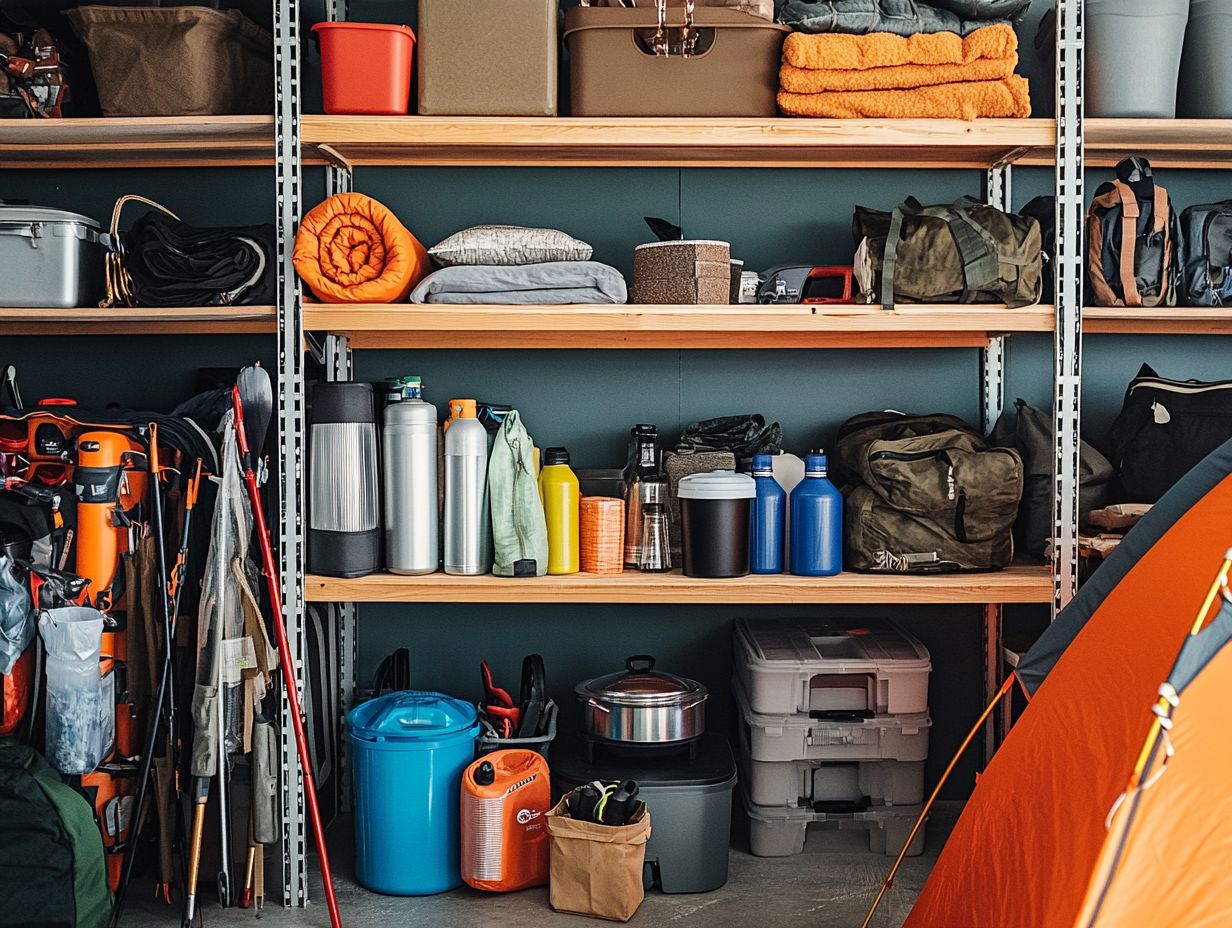
Properly storing your gear is crucial for maximizing its lifespan. This ensures everything is ready for your next trip.
Whether it s tents, sleeping bags, or cooking equipment, each item requires specific care. Regularly check your camping checklist to avoid damage.
Tents and Sleeping Bags
Keep your tents and sleeping bags dry to prevent mold and mildew. Always clean and fully dry them before storage.
When storing tents, roll them loosely instead of folding them tightly. For sleeping bags, stuff them into their sacks to maintain warmth.
Store your gear in a dedicated, dry space. This protects it from harsh temperatures and keeps it in peak condition.
Cooking Equipment
Organize your cooking gear for safety and efficiency. Essential items like stoves and first aid kits should be easy to access.
Use appropriately sized bins for your equipment. Clearly labeled bins help you find what you need quickly.
Stacking solutions can save space and keep your campsite organized. Regularly check your gear for wear and tear.
Clothing and Footwear
Understand seasonal gear needs to keep your outdoor experience enjoyable. Clean your items thoroughly before storing them.
Dirt and moisture can cause odors and damage. Use breathable bags to protect your hiking gear.
Label your containers to streamline your organization. This helps you find items without sifting through your gear.
Long-Term Storage Considerations
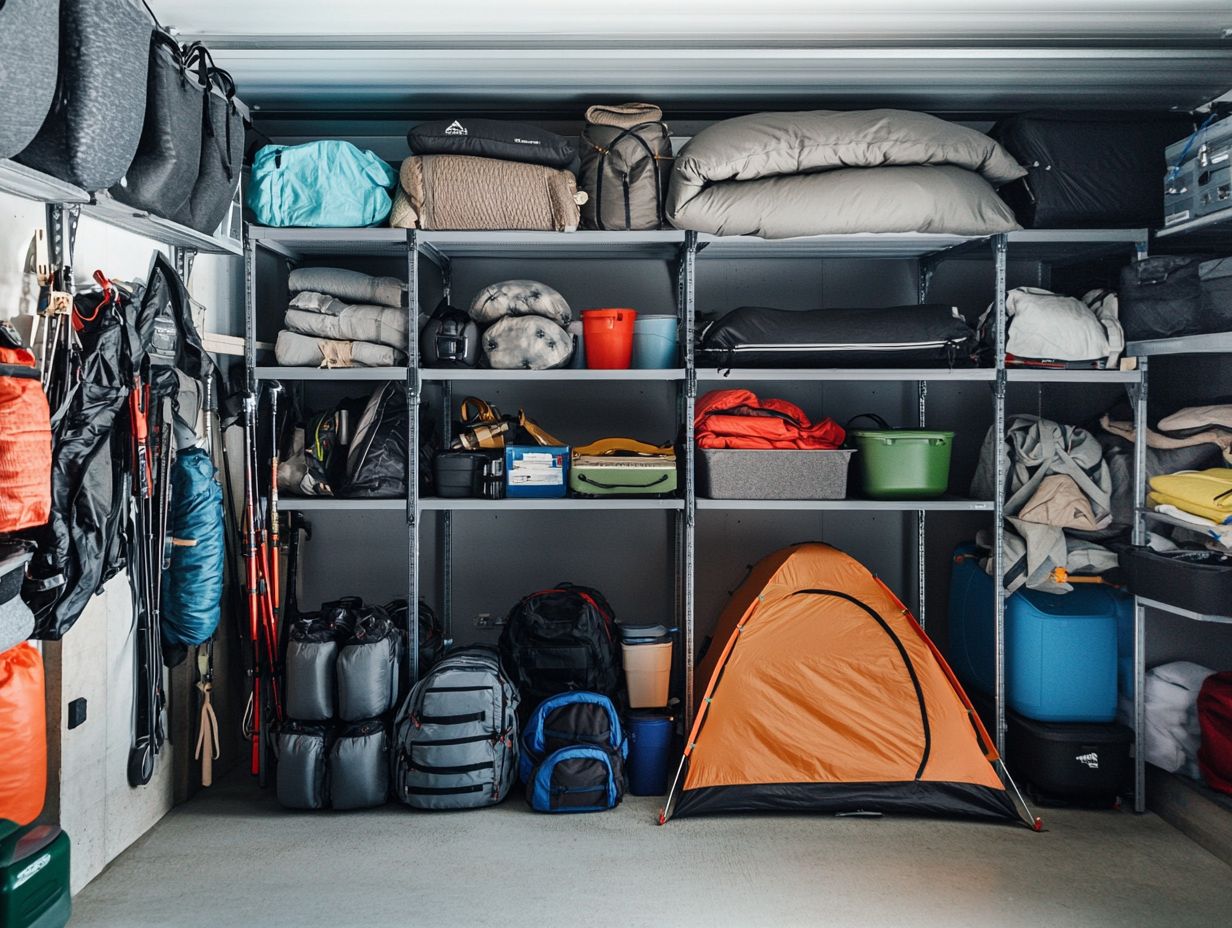
Long-term storage considerations are essential for preserving the quality and usability of your outdoor gear over time, particularly in relation to moisture control. It’s important to prioritize climate control and pest prevention, as these factors play a critical role in ensuring that your camping essentials remain in optimal condition while they re tucked away from pests.
Climate Control and Pest Prevention
Effective climate control and pest prevention are vital for gear storage. These strategies protect your equipment from environmental damage, especially when you use moisture absorbers.
By monitoring humidity levels and ensuring your storage area remains clean and pest-free, you can significantly extend the lifespan of your gear and ensure effective gear maintenance.
Consider implementing moisture absorbers; they effectively reduce humidity, creating an unwelcoming environment for pests while safeguarding sensitive materials. Regular inspections should be a priority look for signs of rodents or insects. Catching potential infestations early keeps your storage clean and safe!
Common pests like moths, termites, and mice often target stored items, leading to costly repairs or replacements if proper pest prevention measures aren’t taken. Utilizing traps and sealing entry points are proactive measures to deter these unwelcome visitors, ensuring your gear remains secure. Using good ventilation systems enhances air circulation, maintaining ideal conditions for your gear storage and improving your outdoor experience.
A well-maintained environment not only prolongs the usability of your equipment but also enhances overall safety, giving you peace of mind during your camping trips.
Retrieving and Maintaining Your Gear
Retrieving and maintaining your gear is just as important as proper storage, ensuring everything is in top-notch condition for your next outdoor escapade, especially when you follow your camping checklist.
Adopting a proactive approach to gear maintenance helps you sidestep potential issues and enhances your safety during camping trips, especially when you review your gear inventory.
Tips for Keeping Gear in Good Condition
Keeping your gear in top-notch condition demands regular maintenance and a keen eye for detail. It’s all about ensuring that your equipment performs optimally when you need it most. By implementing effective packing strategies, you can also safeguard against damage during transportation and storage.
To achieve this, establish a routine that incorporates thorough cleaning and inspections tailored to the specific gear types you own. For outdoor gear like tents or backpacks, a gentle scrub with mild soap and water, followed by air drying, can ward off mold and deterioration. In terms of mechanical gear, regular oiling and checking for wear and tear can significantly extend its lifespan.
Always prioritize safety; ensuring that all straps, buckles, and connectors are intact can prevent accidents while using your gear. Don t forget to regularly check your inventory to ensure your equipment is ready for adventure!
Frequently Asked Questions
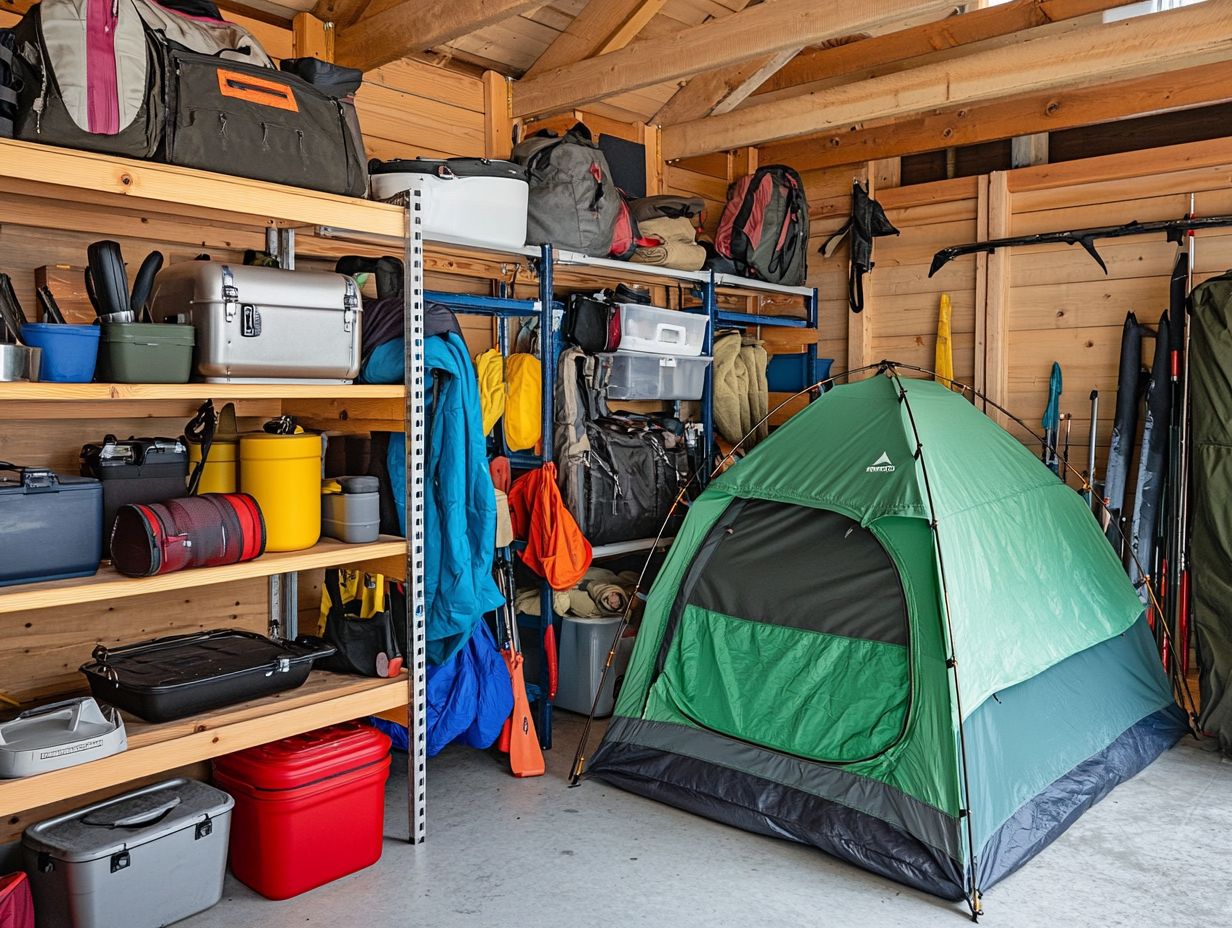
How should I store my camping gear for the best results?
The best way to store your camping gear is to clean and dry it thoroughly before packing it away. This will prevent any mold or mildew from forming and ensure your gear is ready to use for your next camping trip.
How should I clean my camping gear before storing it?
Follow these steps:
- Check the manufacturer’s instructions.
- For tents and sleeping bags, spot clean with biodegradable detergent and mild soap.
- For cookware and utensils, wash with hot water and soap, ensuring they are completely dry before storing.
Is it important to properly pack my camping gear?
Yes, packing your camping gear correctly is crucial for its quality and longevity. Fold and roll items neatly, and use waterproof bags or storage bins to protect against moisture.
How can I protect my camping gear while it s stored?
Avoid storing your gear in extreme temperatures or areas with high humidity. Use waterproof containers and avoid stacking heavy items on delicate gear.
Should I store my camping gear in a specific order?
Organize your gear to make it easy to find items when you need them. Keep frequently used items at the top or front and group similar items together.
How often should I check and maintain my stored camping gear?
Check and maintain your gear at least once a year. Inspect for damage, clean, and re-waterproof if needed to ensure your gear is always ready for your next outdoor adventure!

